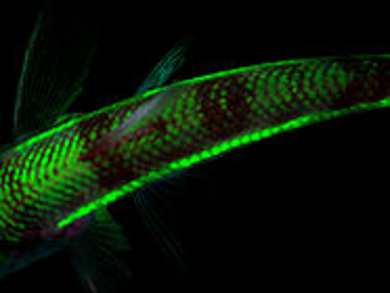Visualizing processes in living cells can be complex and researchers often use several techniques, such as optical imaging and electron microscopy. Multifunctional imaging agents that can be used for different analytical techniques would therefore be useful additions to biochemists’ toolboxes.
Fluorescent nanodiamonds (FNDs) are a promising class of optically active compounds for bioimaging, but have poor contrast in electron microscopy. Yuzhou Wu, Ulm University, Germany, Max-Planck-Institute for Polymer Research, Mainz, Germany, and Huazhong University of Science and Technology, Wuhan, China, Tanja Weil, Ulm University, Germany, and Max-Planck-Institute for Polymer Research, Mainz, Germany and colleagues have developed hybrid particles by decorating FNDs with gold nanoparticles (Au NPs). The team used human serum albumin (HSA) to crosslink the nanodiamonds and the gold nanoparticles and stabilize the hybrid particles.
The resulting material has a greatly enhanced contrast in electron microscopy and allows detailed studies of cells using both fluorescence techniques and electron microscopy. The particles show efficient cellular uptake and low cytotoxicity. According to the researchers, the gold nanoparticles could be replaced with other NPs to fine-tune the particles’ properties. Surface modifications could also allow the hybrid particles to be used for tracking drug delivery or protein-protein interactions inside cells.
- Fluorescent Nanodiamond–Gold Hybrid Particles for Multimodal Optical and Electron Microscopy Cellular Imaging,
Weina Liu, Boris Naydenov, Sabyasachi Chakrabortty, Bettina Wuensch, Kristina Hübner, Sandra Ritz, Helmut Cölfen, Holger Barth, Kaloian Koynov, Haoyuan Qi, Robert Leiter, Rolf Reuter, Jörg Wrachtrup, Felix Boldt, Jonas Scheuer, Ute Kaiser, Miguel Sison, Theo Lasser, Philip Tinnefeld, Fedor Jelezko, Paul Walther, Yuzhou Wu, Tanja Weil,
Nano Lett. 2016.
DOI: 10.1021/acs.nanolett.6b02456




